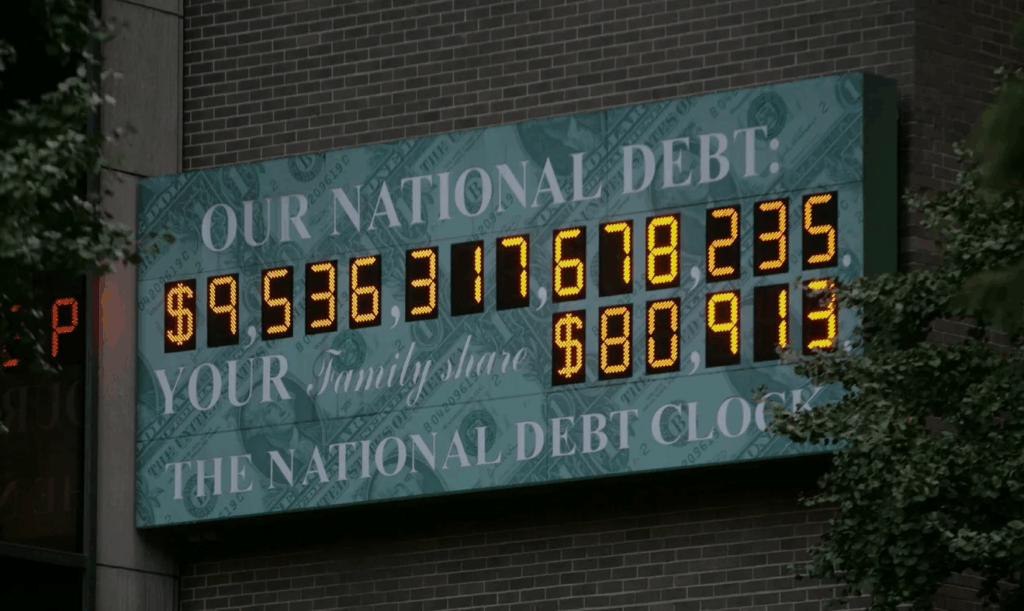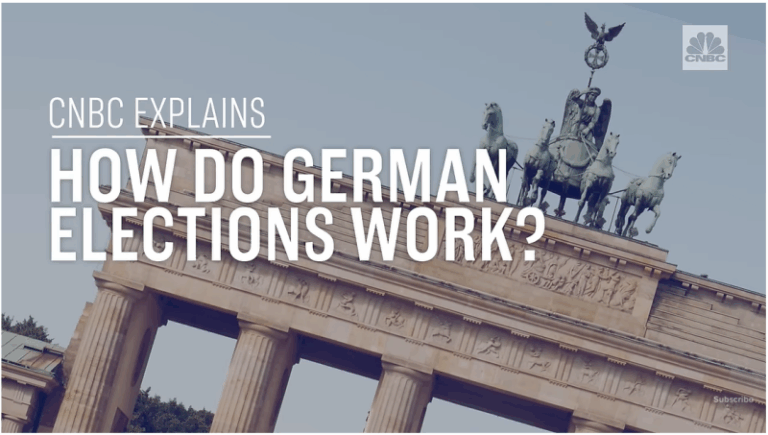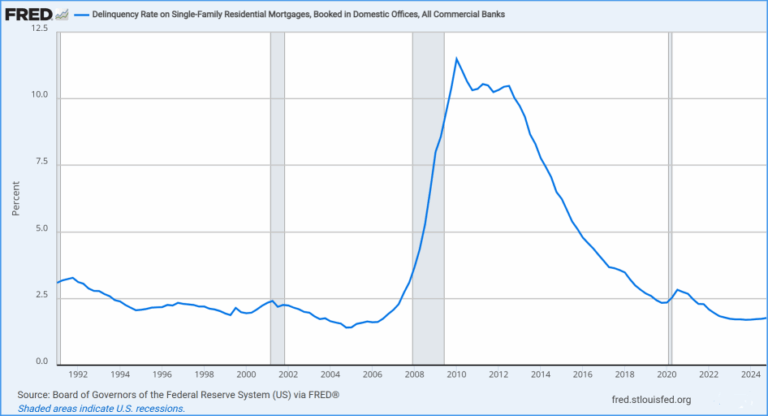
How did former Federal Reserve Chairman, Alan Greenspan, morph from a once Austrian School economist to the Keynesian-leaning Fed chair of the 80s and 90s?
It’s a question I can’t answer. It’s a disappointment that haunts my old bones. I assume he’s disappointed in himself, but I don’t know that. I just know I would be if I were him. Greenspan was an incredibly bright man. Everyone knew it, which is why he was able to get away with the market maneuvers he made with impudence. Nobody wanted to second guess “The Maestro”, or his decisions. For almost two decades he was the unquestioned golden boy.
But the golden boy was uniquely responsible for the deficit spending of the late 80s on into the 90s, and eventually, the 2000s. Prior to 1980, the entire debt of the United States was less than 900 million dollars. Not the deficit, mind you, but the entirety of the national debt. When Alan Greenspan left the chairmanship of the Fed in 2006, the national debt had ballooned to $8.5 trillion dollars. A housing crisis was underway, and the U.S. would undergo the largest economic collapse since the Great Depression in 1930 less than 18 months later.
Alan Greenspan took office in 1987, hired by Ronald Reagan. In that time period, the U.S. and Russia were huge adversaries. Nuclear disarmament talks were on-going and fragile, as both countries were spending huge sums of money on defense missiles and technologies to protect against their use. In the U.S., Reagan was developing what was being called the “Star Wars Program”, a missile defense system which, if achieved, would protect the U.S. from a ballistic missile attack from any nation on earth, especially Russia. It was an incredibly expensive endeavor, one which Russia would try to emulate and spectacularly fail. In fact, the attempt would eventually bankrupt the Soviet Union, causing its collapse.
Before becoming Fed chairman, Alan Greenspan was, by all accounts, a believer in the Austrian School of economics. Austrian School is almost polar opposite of Keynesianism, the economic philosophy developed by John Maynard Keynes in his 1936 treatise, “The General Theory of Employment, Interest, and Money”. In it, Keynes made the argument that government can and should stimulate the economy by encouraging borrowing and spending to facilitate economic growth. Austrian economists, however, advocated saving and producing as the key elements for economic growth and that the government should exercise a laisse-faire approach to economic intervention.
Keynesians, then, prefer to tax the general population to build a pool of money which can then be loaned out to a select few to start businesses which hopefully make a profit with which their business can repay the loan. Of course, if the business fails, tax payers are on the hook for the lost costs. Austrians, on the other hand, want to keep the government’s hands out of their pockets (lower taxes) so that they can use the money they earn through selling the products they design and manufacture to further expand their business. They can then produce further profits which can then be used again and again to produce even more product and thus more profit. If their business fails, only they and their investors are on the hook for the losses. Not the taxpayer.
It is obvious which ideology would more benefit the government, and which would more benefit the entrepreneur. A true capitalist would prefer to operate under the umbrella of an Austrian inclined government. A crony capitalist would naturally prefer the Keynesian approach to government regulation. It is impossible to argue today that the system of economic regulation we operate under is not crony capitalism.
Back to Greenspan. Alan Greenspan’s leanings toward Austrian School thought gave way to Keynesian ideology once he became Fed chief. Most chairs before him believed in a balanced budget and as little deficit in that budget as possible. But, because of the enormous amount of money needed to support the Star Wars effort and other primarily military appropriations, Greenspan, I assume, felt pressured by the Reagan administration, and subsequently the Bush and Clinton administrations, to encourage the spending of money which the government didn’t have. When Ronald Reagan took office in 1980 the national debt was roughly $826 billion dollars. When he left office in 1988, the national debt was $2.86 trillion. At the end of Bush’s two year term the debt had risen to $4.1 trillion. And at the end of the Clinton administration it was $5.65 trillion. When Greenspan gave up the chair in 2006, just 19 years later, the debt was a whopping $8.5 trillion dollars. The national debt had increased 1062.5%, or 10.625 times in less than two decades. But it will get even worse.
Paul O’Neill, George W. Bush’s first Secretary of the Treasury, was effectively fired in December 2002. He was asked to resign after clashing with the administration over economic policies, particularly his opposition to further tax cuts. Spending money the government didn’t have was a precedent set by Reagan, supported by Greenspan, and adopted by every subsequent president until present day. Dick Cheney famously said, “Reagan proved that deficits don’t matter” during a discussion about tax cuts in the early 2000s. This reflected his belief, and many others in government, that economic growth and other priorities could outweigh concerns about balancing the budget. By the year 2008, the national debt would exceed $10 trillion dollars.

The U.S. National Debt Clock, located on the western side of the Bank of America Tower, near Sixth Avenue between 42nd and 43rd Streets in Manhattan, had to be retrofitted with another digit in 2008, a digit that allowed it to count up to $99 trillion dollars. When the clock was originally installed, no one anticipated the national debt would ever exceed $10 trillion dollars. Unfathomable. But it did. The clock had to be replaced with an upgraded version which, as it displays the national debt in real-time, is today approaching $37 trillion dollars. Every single tax payer owes the government $323,000 and counting. Apparently, deficits do matter.
That money, of course, will never be repaid. Something drastic, perhaps catastrophic, will happen to the economy which will wipe out all of that debt with a single stroke of karma. We have maxed out our government credit card and now the piper will have to be paid. It’s a scary thought, but a realistic one.
Alan Greenspan had the potential to influence the U.S. economy with his once Austrian School ideological bent. But he succumbed, i.e., kowtowed, to the sirens of political power. He surrendered his soul to the politicians who placed him on a pedestal and stroked his ego in a way he obviously couldn’t resist. The man who wrote “Deficit spending is simply a scheme for the confiscation of wealth” allowed, and even promoted, the scheme under his watch.
History will not treat him well. Still, I loved and admired the man he was in the years before the government captured him, the years he was part of Ayn Rand’s inner circle, known as “The Collective,” in the 1950s. Rand, a philosopher and novelist, was the founder of Objectivism, a philosophy emphasizing individualism and free-market capitalism. After the 2008 economic collapse, Greenspan would disavow some of his former beliefs, claiming he had to balance pragmatism with ideology. Shame on him. What happened to the man who, in 1967, wrote a short essay he titled “Gold and Economic Freedom”? The essay is a true Austrian School economics masterpiece. His older self should have listened to his younger self, the one that wrote the critically important message below.
GOLD AND ECONOMIC FREEDOM
An almost hysterical antagonism toward the gold standard is one issue which unites statists of all persuasions. They seem to sense – perhaps more clearly and subtly than many consistent defenders of laissez-faire — that gold and economic freedom are inseparable, that the gold standard is an instrument of laissez-faire and that each implies and requires the other.
In order to understand the source of their antagonism, it is necessary first to understand the specific role of gold in a free society.
Money is the common denominator of all economic transactions. It is that commodity which serves as a medium of exchange, is universally acceptable to all participants in an exchange economy as payment for their goods or services, and can, therefore, be used as a standard of market value and as a store of value, i.e., as a means of saving.
The existence of such a commodity is a precondition of a division of labor economy. If men did not have some commodity of objective value which was generally acceptable as money, they would have to resort to primitive barter or be forced to live on self-sufficient farms and forgo the inestimable advantages of specialization. If men had no means to store value, i.e., to save, neither long-range planning nor exchange would be possible.
What medium of exchange will be acceptable to all participants in an economy is not determined arbitrarily. First, the medium of exchange should be durable. In a primitive society of meager wealth, wheat might be sufficiently durable to serve as a medium, since all exchanges would occur only during and immediately after the harvest, leaving no value-surplus to store. But where store-of-value considerations are important, as they are in richer, more civilized societies, the medium of exchange must be a durable commodity, usually a metal. A metal is generally chosen because it is homogeneous and divisible: every unit is the same as every other and it can be blended or formed in any quantity. Precious jewels, for example, are neither homogeneous nor divisible. More important, the commodity chosen as a medium must be a luxury. Human desires for luxuries are unlimited and, therefore, luxury goods are always in demand and will always be acceptable. Wheat is a luxury in underfed civilizations, but not in a prosperous society. Cigarettes ordinarily would not serve as money, but they did in post-World War II Europe where they were considered a luxury. The term “luxury good” implies scarcity and high unit value. Having a high unit value, such a good is easily portable; for instance, an ounce of gold is worth a half-ton of pig iron.
In the early stages of a developing money economy, several media of exchange might be used, since a wide variety of commodities would fulfill the foregoing conditions. However, one of the commodities will gradually displace all others, by being more widely acceptable. Preferences on what to hold as a store of value, will shift to the most widely acceptable commodity, which, in turn, will make it still more acceptable. The shift is progressive until that commodity becomes the sole medium of exchange. The use of a single medium is highly advantageous for the same reasons that a money economy is superior to a barter economy: it makes exchanges possible on an incalculably wider scale.
Whether the single medium is gold, silver, seashells, cattle, or tobacco is optional, depending on the context and development of a given economy. In fact, all have been employed, at various times, as media of exchange. Even in the present century, two major commodities, gold and silver, have been used as international media of exchange, with gold becoming the predominant one. Gold, having both artistic and functional uses and being relatively scarce, has significant advantages over all other media of exchange. Since the beginning of World War I, it has been virtually the sole international standard of exchange. If all goods and services were to be paid for in gold, large payments would be difficult to execute and this would tend to limit the extent of a society’s divisions of labor and specialization. Thus a logical extension of the creation of a medium of exchange is the development of a banking system and credit instruments (bank notes and deposits) which act as a substitute for, but are convertible into, gold.
A free banking system based on gold is able to extend credit and thus to create bank notes (currency) and deposits, according to the production requirements of the economy. Individual owners of gold are induced, by payments of interest, to deposit their gold in a bank (against which they can draw checks). But since it is rarely the case that all depositors want to withdraw all their gold at the same time, the banker need keep only a fraction of his total deposits in gold as reserves. This enables the banker to loan out more than the amount of his gold deposits (which means that he holds claims to gold rather than gold as security of his deposits). But the amount of loans which he can afford to make is not arbitrary: he has to gauge it in relation to his reserves and to the status of his investments.
When banks loan money to finance productive and profitable endeavors, the loans are paid off rapidly and bank credit continues to be generally available. But when the business ventures financed by bank credit are less profitable and slow to pay off, bankers soon find that their loans outstanding are excessive relative to their gold reserves, and they begin to curtail new lending, usually by charging higher interest rates. This tends to restrict the financing of new ventures and requires the existing borrowers to improve their profitability before they can obtain credit for further expansion. Thus, under the gold standard, a free banking system stands as the protector of an economy’s stability and balanced growth.
When gold is accepted as the medium of exchange by most or all nations, an unhampered free international gold standard serves to foster a world-wide division of labor and the broadest international trade. Even though the units of exchange (the dollar, the pound, the franc, etc.) differ from country to country, when all are defined in terms of gold the economies of the different countries act as one — so long as there are no restraints on trade or on the movement of capital. Credit, interest rates, and prices tend to follow similar patterns in all countries. For example, if banks in one country extend credit too liberally, interest rates in that country will tend to fall, inducing depositors to shift their gold to higher-interest paying banks in other countries. This will immediately cause a shortage of bank reserves in the “easy money” country, inducing tighter credit standards and a return to competitively higher interest rates again.
A fully free banking system and fully consistent gold standard have not as yet been achieved. But prior to World War I, the banking system in the United States (and in most of the world) was based on gold and even though governments intervened occasionally, banking was more free than controlled. Periodically, as a result of overly rapid credit expansion, banks became loaned up to the limit of their gold reserves, interest rates rose sharply, new credit was cut off, and the economy went into a sharp, but short-lived recession. (Compared with the depressions of 1920 and 1932, the pre-World War I business declines were mild indeed.) It was limited gold reserves that stopped the unbalanced expansions of business activity, before they could develop into the post-World War I type of disaster. The readjustment periods were short and the economies quickly reestablished a sound basis to resume expansion.
But the process of cure was misdiagnosed as the disease: if shortage of bank reserves was causing a business decline-argued economic interventionists — why not find a way of supplying increased reserves to the banks so they never need be short! If banks can continue to loan money indefinitely — it was claimed — there need never be any slumps in business. And so the Federal Reserve System was organized in 1913. It consisted of twelve regional Federal Reserve banks nominally owned by private bankers, but in fact government sponsored, controlled, and supported. Credit extended by these banks is in practice (though not legally) backed by the taxing power of the federal government. Technically, we remained on the gold standard; individuals were still free to own gold, and gold continued to be used as bank reserves. But now, in addition to gold, credit extended by the Federal Reserve banks (“paper reserves”) could serve as legal tender to pay depositors.
When business in the United States underwent a mild contraction in 1927, the Federal Reserve created more paper reserves in the hope of forestalling any possible bank reserve shortage. More disastrous, however, was the Federal Reserve’s attempt to assist Great Britain who had been losing gold to us because the Bank of England refused to allow interest rates to rise when market forces dictated (it was politically unpalatable). The reasoning of the authorities involved was as follows: if the Federal Reserve pumped excessive paper reserves into American banks, interest rates in the United States would fall to a level comparable with those in Great Britain; this would act to stop Britain’s gold loss and avoid the political embarrassment of having to raise interest rates.
The “Fed” succeeded; it stopped the gold loss, but it nearly destroyed the economies of the world in the process. The excess credit which the Fed pumped into the economy spilled over into the stock market — triggering a fantastic speculative boom. Belatedly, Federal Reserve officials attempted to sop up the excess reserves and finally succeeded in braking the boom. But it was too late: by 1929 the speculative imbalances had become so overwhelming that the attempt precipitated a sharp retrenching and a consequent demoralizing of business confidence. As a result, the American economy collapsed. Great Britain fared even worse, and rather than absorb the full consequences of her previous folly, she abandoned the gold standard completely in 1931, tearing asunder what remained of the fabric of confidence and inducing a world-wide series of bank failures. The world economies plunged into the Great Depression of the 1930’s.
With a logic reminiscent of a generation earlier, statists argued that the gold standard was largely to blame for the credit debacle which led to the Great Depression. If the gold standard had not existed, they argued, Britain’s abandonment of gold payments in 1931 would not have caused the failure of banks all over the world. (The irony was that since 1913, we had been, not on a gold standard, but on what may be termed “a mixed gold standard”; yet it is gold that took the blame.) But the opposition to the gold standard in any form — from a growing number of welfare-state advocates — was prompted by a much subtler insight: the realization that the gold standard is incompatible with chronic deficit spending (the hallmark of the welfare state). Stripped of its academic jargon, the welfare state is nothing more than a mechanism by which governments confiscate the wealth of the productive members of a society to support a wide variety of welfare schemes. A substantial part of the confiscation is effected by taxation. But the welfare statists were quick to recognize that if they wished to retain political power, the amount of taxation had to be limited and they had to resort to programs of massive deficit spending, i.e., they had to borrow money, by issuing government bonds, to finance welfare expenditures on a large scale.
Under a gold standard, the amount of credit that an economy can support is determined by the economy’s tangible assets, since every credit instrument is ultimately a claim on some tangible asset. But government bonds are not backed by tangible wealth, only by the government’s promise to pay out of future tax revenues, and cannot easily be absorbed by the financial markets. A large volume of new government bonds can be sold to the public only at progressively higher interest rates. Thus, government deficit spending under a gold standard is severely limited. The abandonment of the gold standard made it possible for the welfare statists to use the banking system as a means to an unlimited expansion of credit. They have created paper reserves in the form of government bonds which — through a complex series of steps — the banks accept in place of tangible assets and treat as if they were an actual deposit, i.e., as the equivalent of what was formerly a deposit of gold. The holder of a government bond or of a bank deposit created by paper reserves believes that he has a valid claim on a real asset. But the fact is that there are now more claims outstanding than real assets. The law of supply and demand is not to be conned. As the supply of money (of claims) increases relative to the supply of tangible assets in the economy, prices must eventually rise. Thus the earnings saved by the productive members of the society lose value in terms of goods. When the economy’s books are finally balanced, one finds that this loss in value represents the goods purchased by the government for welfare or other purposes with the money proceeds of the government bonds financed by bank credit expansion.
In the absence of the gold standard, there is no way to protect savings from confiscation through inflation. There is no safe store of value. If there were, the government would have to make its holding illegal, as was done in the case of gold. If everyone decided, for example, to convert all his bank deposits to silver or copper or any other good, and thereafter declined to accept checks as payment for goods, bank deposits would lose their purchasing power and government-created bank credit would be worthless as a claim on goods. The financial policy of the welfare state requires that there be no way for the owners of wealth to protect themselves.
This is the shabby secret of the welfare statists’ tirades against gold. Deficit spending is simply a scheme for the confiscation of wealth. Gold stands in the way of this insidious process. It stands as a protector of property rights. If one grasps this, one has no difficulty in understanding the statists’ antagonism toward the gold standard.
by Alan Greenspan
1967








